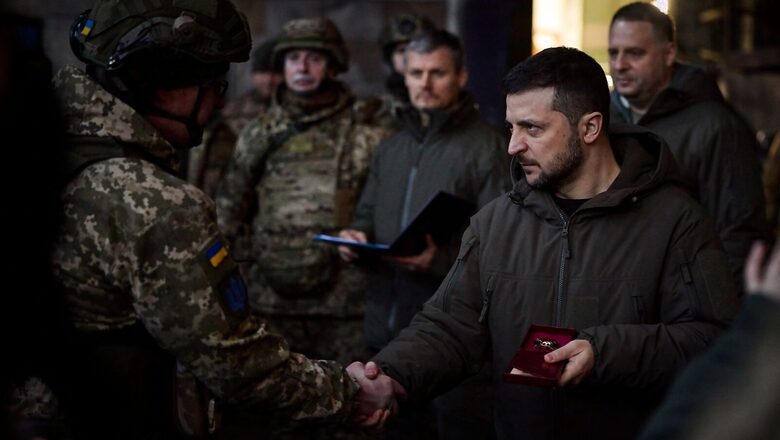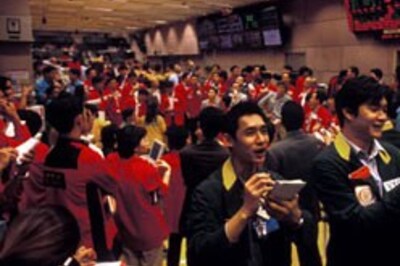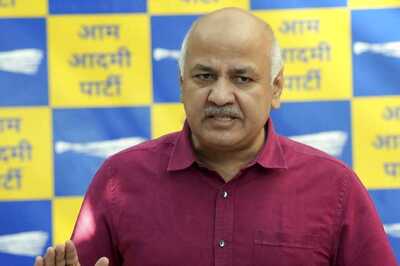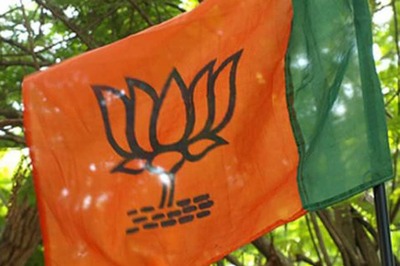
views
Backdrop
The war in Ukraine started as a conventional war under nuclear hangover and soon turned into a hybrid war with non-state actors triggering sanctions against Russia as part of an economic war, Russia trying to starve the opponents of as much energy as possible, and the West trying to minimise Russian financial gains by capping the price and coercion of non-compliant states, albeit with a divided house. While the kinetic, contact, hybrid war continues between Russia and Ukraine, the US-led North Atlantic Treaty Organisation (NATO) is also fighting a non-kinetic, non-contact war in economic, information, diplomatic and political domains, simultaneously against Russia.
Despite the International Atomic Energy Agency (IAEA) and World Health Organization (WHO) raising alarm over nuclear radiation and the health crisis in Ukraine, opposing sides continue their aggressive stance alongside, making excuses for not talking to each other. With the crisis caused by missile landing in Poland being watered down by NATO to avoid exposing its cracks, the West is trying its best to hide differences in the Russian energy price cap. With the Russian pullback from Kherson, followed by consistent targeting of energy and critical infrastructure in Ukraine, the changing dimensions of war in Ukraine are becoming the new normal.
Existing Reality
The Russia-Ukraine War seems to be poised for dangerous escalation with multi-domain threats ranging from nuclear assertions/allegations and satellite references, to energy grid targeting and cyberattacks ever since drone attacks on Crimea and the Black Sea Fleet. General Mark A. Milley, Chairman of the Joint Chiefs of Staff, USA, has spoken about the reality of the military situation in Ukraine, urging diplomacy and talks, which calls for serious consideration from American decision-makers, its NATO followers, and Ukraine President Volodymyr Zelenskyy.
The assertion by Ukraine that its counteroffensives are going well, assuming unending financial and military support from NATO, gives them a reason to believe that continuing the fight to reclaim all lost territory is doable and preferable, instead of negotiating with the Russians. This is a risky proposition. Russia, too, finds it worthwhile to redeploy, consolidate, and retain its gains made so far, until the winters start biting the opposing parties beyond tolerance. The dimensions of the war are expanding to include targeting dual-use critical infrastructure, energy grid, clandestine operations, enhanced information war, psychological offensive, and use of mercenaries, with no clarity of the end which either side wants to achieve to terminate the war. Both sides seem to be going crazy, with one bombarding the Zaporizhzhia nuclear plant, and the other deploying its arsenal there.
Russian Intention and Strategy
Post hasty referendum in four regions to join Russia, it has suffered a series of setbacks in military operations like Kharkiv and Kherson. With heavy casualties to men and material and miscalculations about NATO’s resolve to support Ukraine, Russians seem to have modified their strategy and are responding by imposing an energy crisis. Russia is yet to achieve its strategic aim of liberating the Donbas region and the remaining southern Ukraine to join with Transnistria to landlock Ukraine.
Russians realised that they have opened wide frontages beyond sustainable limits with depleting combat resources; hence trading ground for viable defence lines is a sensible military strategy. Their logic of pullback from Kherson follows this strategy as it was impractical to hold such a large built-up area, with a shortage of infantry suffering more casualties from insurgent attacks by the Ukrainians. It made better sense to pull back to the Eastern bank of Dnieper and hold a stronger defensive line. From a Russian perspective, Ukraine’s energy grid and essential services are just as much a target for dual use (civil and military) as the Russian bridge to Crimea; hence, attacking it will have a greater impact on undermining the Ukrainian resolve to fight. Although Russians as well as Ukrainians, are used to fighting in winters, the greater availability of energy with Russians can put them in an advantageous position.
Russia is cognizant of its limitations in the domains of economic, diplomatic, information warfare, and political warfare, heavily weighted in favour of NATO and Ukraine and the fact that it is unlikely to receive significant outside military material support. The mild reference by Russia to use nuclear weapons in Ukraine, if Russian ‘territorial integrity’ is threatened will continue to prevent NATO from entering into contact war with Russia in future as well.
US-led NATO: Intention and Strategy
The overstated success of the Ukrainian counteroffensives and its own gains in the non-kinetic, non-contact war against Russia in the economic, information, diplomatic, and political spheres may encourage NATO, but the realistic military assessment suggests that even if billions of dollars are invested in Ukraine, evicting Russia from the entire territory as per Zelenskyy’s stance is not possible.
From the US’ point of view, it has achieved many of its objectives. Nord Streams 1 and 2 are non-functional and Russia’s influence over the European Union (EU) is decreasing. EU is compelled to keep purchasing its expensive oil and military equipment. Russia is now less powerful and US dominance over the EU is no longer at risk. As a result, it is recommending Zelenskyy take the call, to avoid the responsibility of Ukraine’s submission with its territory in Russian hands. The US is also looking to secure earnings from contracts to rebuild Ukraine.
The US is supporting proxy or shadow wars motivated to win without fighting. However, the emergence of alternative global financial systems can undermine its control over the current global financial system in the long run; hence it can’t claim to be the outright winner. The Russia-Iran-North Korea axis will also be a concern for the US.
The war is not making Europe more peaceful, with millions of refugees mixed with activated mercenaries and a long border with aggressive Russia.
The EU will have to raise its defence budget, give up its economic and energy interests and surrender some sovereign decisions to the US, to seek security shelter from it, to counter unfriendly Russia in the long run. However, Ukraine and the EU need to ask themselves: Will the US ever risk New York and Washington in order to save Kyiv or Poland?
Difficult Choices for Ukraine!
The cumulative aid of over $90 billion poured into Ukraine, and the rhetoric of Ukraine winning is giving an unrealistic hope to Zelenskyy that he need not talk to Putin and that all the taxpayers in the US and Europe will continue to deliver whatever he asks.
It needs to be noted that Ukraine has lost 15 percent of its original land area in this war, displaced more than 6 million people internally, sent nearly 8 million refugees outside, suffered significant casualties and destroyed half of its energy infrastructure. Regaining lost territory from the Russians who are seen to be digging in for a protracted war during winters and beyond will be very tough, but currently, it is struggling to find an answer to the energy offensive.
Way Ahead
In the Big Power Contestation in Ukraine, the world wants the war to end as it is making everyone more susceptible to inflationary pressures and causing an unprecedented energy and food catastrophe. The negotiations seem difficult because Russia has not yet achieved its strategic objectives. On the other side, the political hierarchy of US-led NATO finds an ongoing proxy war, without sharing any burden of body bags, as a convenient option.
Russian actions are encouraging NATO to accept the bid of Finland and Sweden to join the organisation, as they have strong militaries, to secure its northern flank in the long run. Russia, therefore, might end up with an extension of its direct land border with NATO by over 1000 km with Finland joining it as the final end state, an outcome that it wanted to avoid.
In the current phase of the offensive, the economic coercion by the West has led to energy coercion by Russia. Pentagon seems to be coming to terms with reality but Zelenskyy is finding it difficult to swallow, as he has asked for public format negotiations. After the Poland episode, what remains to be seen is — will NATO see some sense in moderating him to get to the talking table?
The author is a strategic and security analyst, a veteran Infantry General with 40 years of experience in national and international fields and the UN. He is currently Chief Instructor at USI of India and can be reached at @asthana_shashi on Twitter. Views expressed are personal.
Read all the Latest Opinions here



















Comments
0 comment